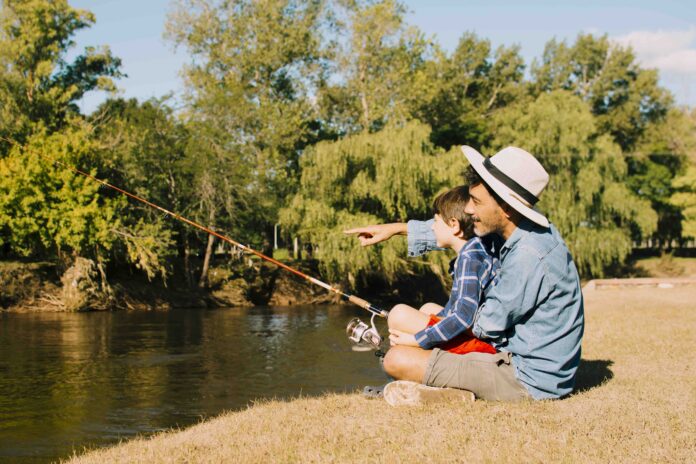Whether you’re new to fishing or a seasoned pro, saltwater shore fishing is an exciting and rewarding experience. It involves catching fish from the shoreline in coastal areas and can be done by anyone with some basic knowledge and equipment.
The activity is popular among anglers worldwide because it offers access to a wide variety of fish species without requiring expensive boats or charters. Maximizing your catches from the coastline is essential for a successful fishing trip.
Unlike boat fishing, where anglers have the advantage of mobility on the water, shore fishermen have limited access to fish habitats. Therefore, learning how to optimize your catch rate can make all the difference between returning home empty-handed and bringing home an impressive haul that makes for great pictures and even better meals.
Why Maximize Catches From the Coastline?
The benefits of maximizing catches from the coastline go beyond just having bragging rights and fresh seafood on your plate. For starters, it’s more cost-efficient than chartering a boat or purchasing one yourself. Additionally, it’s environmentally friendly since you don’t need to burn fuel or contribute to noise pollution that can harm marine life.
Shoreline fishing also provides an opportunity for anglers to get in touch with nature while developing new skills and techniques. Furthermore, it’s a great way to introduce children or newcomers to the sport since it doesn’t require any specialized training or licenses.
Saltwater shore fishing is an excellent way to enjoy nature while catching fish close to home without breaking the bank. To make this experience even more enjoyable, we’ll cover everything you need in this article about understanding basics like gear selection and identifying prime locations & times as well as advanced techniques like surf fishing & fly casting so that you can maximize your catch rates from any coastline!
Understanding the Basics
Choosing the right gear for saltwater shore fishing
When it comes to choosing the right gear for saltwater shore fishing, there are a few things to consider. Firstly, you’ll need a strong and durable fishing rod that can handle the weight of larger fish species. Look for a rod with a fast action and heavy power rating to ensure that it can handle strong currents and waves.
Additionally, you’ll need a reliable spinning reel with at least 200 yards of line capacity. Another important factor to consider is your choice of bait and lures.
It’s essential to choose baits and lures that are appropriate for the species you’re targeting, as well as the water conditions. Many experienced saltwater anglers swear by live bait such as shrimp or squid, which can be very effective at attracting larger game fish.
Identifying the best time and location for fishing
Timing is everything when it comes to saltwater shore fishing. The best time to cast your line is often early in the morning or late in the evening when fish are more active and feeding closer to shore. Additionally, understanding tidal patterns can be helpful in identifying when fish will be most active.
In terms of location, rocky outcroppings, jetties, inlets, beaches and piers are all great spots where fish congregate along coastal waters. When selecting a location, look for areas with deeper water close to shore where predatory fish like snook or tarpon may be lurking.
Knowing the types of fish that can be caught from the shoreline
There’s an abundance of different species that can be caught from shoreline positions including redfish, trout, snook and tarpon just to name a few! Tarpon are especially popular among anglers due their impressive size (averaging around 6 feet long!) and their thrilling acrobatics when hooked.
Identifying the types of fish you’re likely to find in your chosen location can help you tailor your gear and bait choices to maximize your chances of a catch. Many shore anglers recommend doing research into which species are most commonly found in specific areas, as well as the best time of year to target them.
Casting techniques for different types of fish
Casting techniques are essential in saltwater shore fishing. Each type of fish requires a unique casting technique to catch it successfully. For instance, if you’re targeting redfish, you’ll need to cast your line closer to the shoreline.
On the other hand, if you’re trying to catch tarpon or snook, you’ll need to cast your line further out into the water. Additionally, you should consider the weather conditions when choosing your casting technique.
If it’s windy outside, try using a sidearm cast for better precision and distance. In contrast, if it’s calm on the water, use an overhead cast.
When casting close to structures like rocks or jetties where fish like to hang out, be sure not to let your bait get tangled up in them. Use a light jig head with a soft plastic bait and bounce it off the bottom instead of getting too close.
Bait selection and presentation
The right bait can make all the difference when it comes to catching saltwater fish from shorelines. Live bait is often more effective than artificial lures since they mimic real food sources that are prevalent in saltwater environments such as shrimp or squid. When selecting live bait for shore fishing, consider choosing ones that are native to your location; this will increase your chances of catching local species that feed off these organisms regularly.
Fish have different feeding habits; some prefer movement while others prefer stillness – keep this in mind when presenting your bait. For example: if there is little current but plenty of structure around (e.g., rocks), snap jigging would be an effective way of enticing fish into biting by bouncing them off structures with swift movements.
Using chum to attract more fish
Using chum can be an excellent way of attracting more fish onto your line from shore. Chumming is the process of dispersing small pieces of bait into the water to create a scent trail that will attract fish towards your fishing location.
There are several ways to chum depending on the type of fish you’re targeting and your experience level. One popular method is to use chum bags filled with crushed up bait; these can be tied off near structures or thrown directly into the water.
Another way to chum from shore is by using a cast net to catch baitfish like mullet or sardines. Once caught, you can chop them up and throw them into the water as chum.
Pay attention when using chum as other predators might be attracted by its scent too! To avoid unwanted bites while fishing, keep an eye out for other marine life in the area – if there are dolphins or sharks around, it might be best not to chum at all.
Surf Fishing: Catching Fish in Rough Waters
Understanding wave patterns and tides
One of the most crucial aspects of surf fishing is understanding the behavior of waves and how they affect fish. Fish are often found in areas where the waves break, creating a feeding zone.
The best time to fish is during high tide when the water is moving towards shore. Pay attention to the patterns of waves as they can indicate where fish may be feeding.
Choosing appropriate surf fishing gear
The right gear can make all the difference when it comes to surf fishing. Longer rods (over 9 feet) are necessary for casting far out into the water and detecting bites from a distance.
A heavy-duty spinning reel with a strong drag system is also recommended for reeling in larger species like striped bass or redfish. Additionally, make sure you have a sturdy rod holder to keep your rod secure while you wait for a bite.
Techniques for catching popular surf species like striped bass and redfish
Two popular species that can be caught through surf fishing are striped bass and redfish. For striped bass, try using bait like live eels or chunks of fresh bunker placed on a circle hook with enough weight to keep it closer to the bottom in rougher waters. For redfish, use cut bait like mullet or shrimp as well as lures that mimic their natural prey such as crabs or shrimp.
Night Fishing: Reeling in Big Ones under a Starry Sky
Preparing your equipment for night fishing
Before heading out for night fishing, make sure your equipment is prepared appropriately. This includes ensuring all lights on your boat are working properly, wearing proper clothing including reflective gear if needed, and packing extra batteries for any electronic devices you may be using.
Identifying nocturnal fish species like tarpon and snook
Nocturnal fish species such as tarpon and snook are more active at night, making them easier to catch. To identify these species, pay attention to their distinctive shapes and colors. Tarpon have a large silver body with a flat head while snook have a darker body with a protruding lower jaw.
Tips for staying safe while night fishing
Safety is paramount when it comes to night fishing. Always let someone know where you’ll be fishing and when you plan to return.
Wear appropriate clothing for the weather conditions, always carry a flashlight or headlamp, and be aware of your surroundings. Additionally, avoid drinking alcohol while fishing on the water at night.
Fly Fishing: A Unique Approach to Saltwater Shore Fishing
Understanding fly casting techniques on the shoreline
Fly fishing can be an effective technique in saltwater shore fishing if done correctly. When casting from the shoreline, it’s important to use shorter rods (around 8-9 feet) suited for the location’s conditions as well as sinking line or intermediate line depending on water depth.
Selecting appropriate flies based on target species and water conditions
Targeting specific species requires selecting the right type of fly based on their feeding habits and natural prey in the area. For example, bonefish may prefer small shrimps or crabs while tarpon might go after baitfish patterns like Clousers.
Strategies for catching elusive saltwater game fish like bone
Catching elusive saltwater game fish like bone can be challenging but not impossible with proper strategy. Try sight-fishing by looking for subtle movements in the shallow waters that may indicate feeding activity below. Additionally, using techniques such as “stripping” or “twitching” the fly to mimic natural prey may entice these fish to bite.
Conclusion
Saltwater shore fishing offers a variety of exciting opportunities for anglers. By understanding the basics, techniques, and niche subtopics like surf fishing, night fishing, and fly fishing, you can maximize your chances of catching a variety of species from the coastline.
As with any form of fishing, remember to be respectful of the environment and always practice catch-and-release when possible. With patience and perseverance, you’ll be reeling in big catches in no time!



